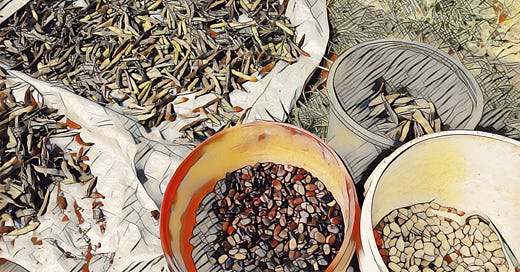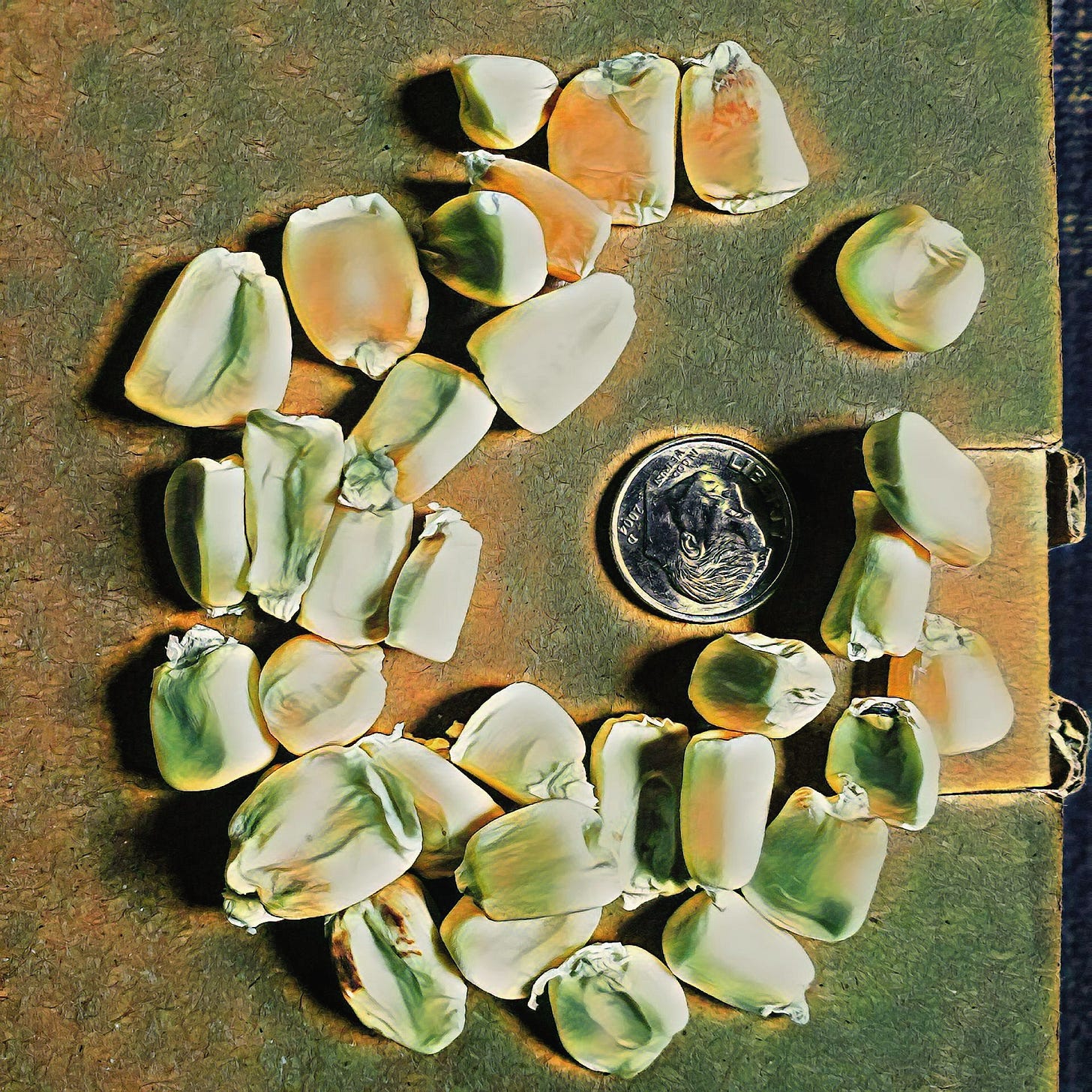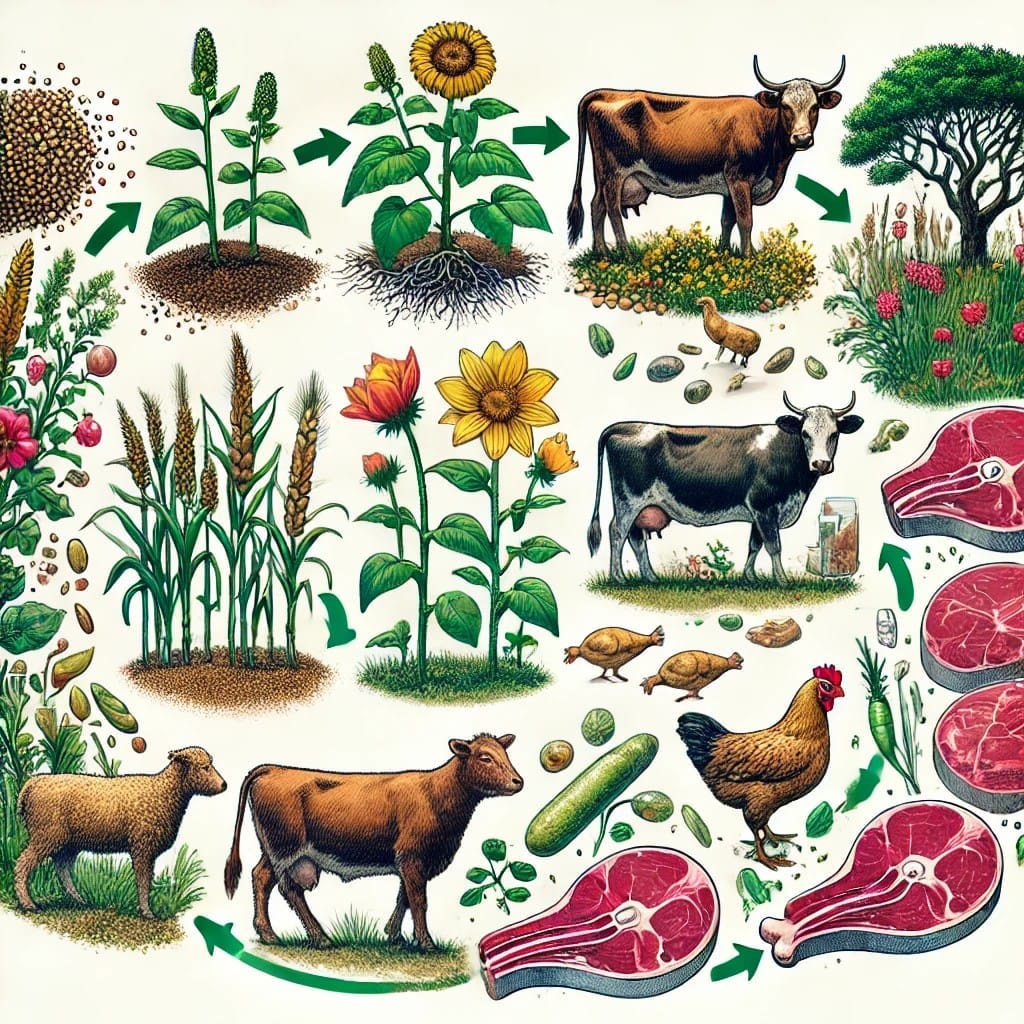The evolution of fruits and vegetables is deeply intertwined with the process of seed dispersal, which is crucial for the propagation of plant species. Why then have human-beings taken it upon themselves to evolve seedless fruit & vegetables?
Slight side note here, dried beans are seeds, is anyone working on the concept of seedless beans?
The How’s & Why’s of Seedless
The development of seedless fruits and vegetables is a fascinating and cautionary example of human intervention in plant breeding and agriculture. Here’s a brief overview of how seedless varieties came to be:
Seedless Fruits:
Natural Mutations:
Bananas: The common Cavendish banana is naturally seedless (see more information in our previous article here) due to a genetic mutation. Wild bananas have seeds, but the variety we eat today is a triploid, meaning it has three sets of chromosomes, which prevents it from producing viable seeds. This mutation was naturally occurring and was selected by early agriculturalists for cultivation due to the fruit's palatability and convenience.
Grapes: Some grape varieties, like the Thompson seedless grape, also result from natural mutations. (This seems like an oxymoron to us, why would grapes or any fruit choose to go seedless becoming infertile?) These grapes have vestigial seeds that do not develop fully. Over time, these mutations were propagated by humans to maintain the seedless characteristic.
Selective Breeding:
Over centuries, humans have selectively bred plants to enhance desired traits, including seedlessness. In grapes, for example, selective breeding has been used to create seedless varieties that are easier to eat and use in food processing. We suspect that the use of seedless fruit and vegetables in food processing was a major driver here.
Induced Parthenocarpy:
Citrus Fruits: Seedless oranges and other citrus fruits often result from a process called parthenocarpy, where the fruit develops without fertilization. Parthenocarpy can be naturally occurring, but it has also been induced by humans through selective breeding. Additionally, treatments like spraying flowers with plant hormones can stimulate the development of seedless fruits.
Hybridization:
Watermelons: Seedless watermelons are created through hybridization. By crossing a diploid watermelon (with two sets of chromosomes) with a tetraploid watermelon (with four sets of chromosomes), a triploid watermelon (with three sets of chromosomes) is produced. Triploid watermelons are sterile and, therefore, seedless. These watermelons are often grown alongside diploid varieties to encourage pollination and fruit production.
Seedless Vegetables:
Seedless vegetables are less common than seedless fruits. However, similar techniques are used in their development. For instance, some varieties of cucumbers and tomatoes have been bred to be seedless or to produce fewer seeds, which is desirable for culinary purposes. This can involve selective breeding or inducing parthenocarpy.
Genetic Engineering:
In modern times, genetic engineering has also been used to create seedless varieties or to enhance existing ones. This includes manipulating the genes responsible for seed development or inducing sterility in the plant.
Agricultural Impact:
The creation and cultivation of seedless fruits and vegetables have had a significant impact on agriculture, as these varieties are often preferred by consumers and are easier to process for the food industry. However, the reliance on certain seedless varieties can also lead to challenges, such as reduced genetic diversity and increased vulnerability to diseases (as seen with the Cavendish banana).
In summary, seedless fruits and vegetables have evolved through a combination of natural mutations, selective breeding, hybridization, and more recently, genetic engineering. These developments have been driven by the desire for more convenient, palatable, and marketable produce at the expense of probable increasing food insecurity.
Another digression, how about seedless Corn? What we are trying to emphasize here is the nonsense of seedless concepts.
The Ultimate Seed Delivery Systems
The evolution of fruits and vegetables is deeply intertwined with the process of seed dispersal, which is crucial for the propagation of plant species. Here’s a more detailed explanation:
Fruits as Seed Dispersal Mechanisms:
Fruits are essentially the matured ovaries of flowers, and they have evolved a wide range of forms, colors, and flavors to attract animals and other organisms to aid in seed dispersal. Here’s how this works:
1. Attraction to Animals:
- Many fruits develop vibrant colors, enticing aromas, and sweet flavors as they ripen. These traits are particularly appealing to animals, which consume the fruit and, in doing so, take in the seeds.
- The seeds of many fruits are designed to withstand the digestive processes of animals. After consumption, the seeds are often excreted at a different location, often along with a bit of fertilizer, giving the seeds a good chance to germinate and grow into new plants. Another aside here, which we will address in more detail in future articles, excretion is a tremendous soil fertilizer, however the advent of CAFO’s (concentrated animal feeding operations) has turned animal excretion into a dangerous pollutant in many cases.
2. Seed Dispersal Strategies:
- Endozoochory: This is the process where animals eat fruits, and the seeds are later excreted. This is one of the most common seed dispersal mechanisms in nature.
- Epizoochory: Some seeds are designed to cling to the fur or feathers of animals, hitching a ride to a new location where they can then drop off and grow.
- Other Mechanisms: Some plants rely on mechanisms like wind, water, or even explosive dehiscence (where the fruit bursts open and flings seeds away) to spread their seeds.
3. Coevolution with Dispersers:
- Many plants have coevolved with specific animals that serve as their primary dispersers. For example, certain fruits are tailored to the diets and behaviors of particular bird species, primates, or even bats. This relationship benefits both the plant, which gets its seeds spread, and the animal, which gets a nutritious food source.
Vegetables and Seed Dispersal:
While fruits are directly involved in seed dispersal, vegetables are a bit different. The term “vegetable” is a culinary classification that can refer to many parts of a plant, such as leaves (lettuce), stems (celery), roots (carrots), and bulbs (onions). However, some vegetables are indeed the fruiting bodies of plants (like tomatoes, peppers, and cucumbers) and function similarly to other fruits in seed dispersal.
Human Influence:
- As humans began to cultivate plants, they started selecting for certain traits, such as larger, sweeter, or seedless fruits, which in some cases reduced the plant’s natural ability to spread its seeds through animal consumption. This has led to the need for humans to take a more active role in propagating these plants.
Natural vs. Artificial Selection:
- Over millennia, natural selection shaped fruits to maximize their chances of being eaten and their seeds dispersed. However, in the last few thousand years, human agricultural practices have increasingly driven the evolution of fruits and vegetables. This has sometimes resulted in varieties that would struggle to survive or reproduce without human intervention.
In summary, fruits indeed evolved to attract animals and other life forms to assist in seed dispersal, ensuring the continuation of the plant species. However, human cultivation has modified this process, leading to the development of seedless varieties and other traits that diverge from the plant's original evolutionary purpose.
Conclusion
As we write this there are great concerns around human fertility rates declining, the more strident voices of concerns are coming from governments, mainly for financial reasons. Obviously, our main method of assessing and passing value is via currency, however we also believe deeply in the true value of seeds and spores; hence the existence of this Substack channel. We are dedicated to the saving, distribution and sharing of seeds and in this case seedless fruit and vegetables makes no sense at all to us as almost all terrestrial based life-forms depend on seeds and spores, directly or indirectly as we show in the image above.







